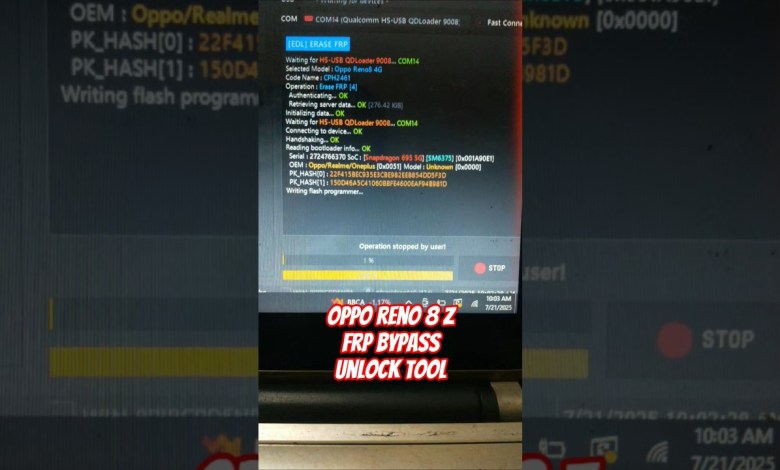Unlock Secrets: Bypass FRP on Oppo Reno 8 Z with Android 13/14!

Oppo Reno 8 Z frp bypass new sec android 13 14 unlock tool not work Qualcomm Snapdragon #bypass_frp
“Dame la mano que tú eres cosa buena”: A Celebration of Connection Through Dance
Introduction
The song “Dame la mano que tú eres cosa buena” has captivated audiences with its infectious rhythm and meaningful lyrics. Originating from Latin America, it emphasizes the beauty of connection and the joy of dancing. This article explores the themes within the song, delves into its cultural significance, and discusses the universal appeal of dance as an expression of happiness.
The Essence of the Lyrics
At its core, the lyrics speak to the invitation to connect with another person. Lines like “Dame la mano” (Give me your hand) convey a sense of openness and warmth. The phrase “tú eres cosa buena” (you are a good thing) highlights the appreciation and positivity one feels toward another.
The Desire to Dance
The lyrics further express a longing to dance: “Esta noche quiero bailar sobre la arena” (Tonight, I want to dance on the sand). This imagery evokes a sense of freedom and joy, inviting listeners to visualize a beautiful night spent dancing under the stars, with sand beneath their feet.
Dancing as a Universal Language
Dance serves as a universal form of communication. Regardless of language or culture, the act of dancing brings people together, fostering connections that words cannot often express. The song encapsulates this idea by encouraging listeners to join together in celebration.
The Power of Togetherness
When the singer implores, “Ven para acá, ven para acá” (Come here, come here), it signifies a call to unite. This beckon is not just about proximity; it’s about coming together in joy, sharing personal experiences, and forming bonds. The collective nature of dancing reinforces community, camaraderie, and shared happiness—elements that resonate deeply across generations.
Cultural Significance of Dance in Latin America
In Latin American culture, dance holds profound significance. Various forms of dance—from salsa to tango—represent more than just entertainment; they are a form of storytelling, a connection to heritage, and a mode of expressing emotions.
Traditional versus Contemporary Dance
While many traditional dances celebrate historical narratives and cultural identity, contemporary dance has emerged as a blend of various styles, keeping cultures alive and relevant. “Dame la mano que tú eres cosa buena” embodies this evolution by incorporating traditional influences with modern sensibilities, making it accessible to diverse audiences.
The Role of Music in Dance
Music is inherently tied to dance. It creates an atmosphere and sets the emotional tone for movement. The rhythm and melody in the song inspire listeners to let go of their inhibitions and move freely. This aspect of the song serves as a reminder of music’s power to uplift and inspire, creating an immediate connection between performers and audiences.
The Beat That Moves Us
The energetic beat invites spontaneous movement, making it impossible to resist the urge to dance. This concept highlights an essential aspect of human nature: the instinct to express joy and celebrate life through movement.
Embracing Vulnerability
The call to “take my hand” also signifies a form of vulnerability. When individuals share a dance, they open themselves up to connection—both emotionally and physically. This vulnerability can act as a bridge, fostering intimacy and trust between partners.
Trust in Dance
In partner dancing, trust is paramount. Participants rely on each other to interpret movements, navigate physical space, and maintain balance. This shared experience can deepen relationships, forge new friendships, and solidify a community spirit.
The Rhythm of Joy
Each time the chorus repeats, reinforcing the desire to dance on the sand, it acts as a mantra for happiness. The infectious rhythm compels listeners to engage, reminding them of the simple joys of existence.
Dance as a Form of Expression
Dance allows individuals to express emotions they might find challenging to convey through words. The laughter, smiles, and enjoyment that arise in a dance setting create a space where individuals feel free to express their true selves, making every moment an opportunity for joy.
The Legacy of “Dame la mano que tú eres cosa buena”
As the song continues to resonate with new audiences, its legacy grows stronger. Modern adaptations, covers, and remixes keep the spirit alive, ensuring that generations continue to dance and celebrate life’s joys.
A Song for All Occasions
This song finds a place in various settings—from weddings to parties, or simply casual gatherings among friends. Its versatility ensures that its joyous message of connection is shared in multiple contexts, further solidifying its relevance over time.
Conclusion
“Dame la mano que tú eres cosa buena” is more than just a catchy tune. It embodies the essence of connection, joy, and the instinct for dance that lies within us all. By inviting individuals to dance and celebrate together, this song serves as a timeless reminder of the beauty of human interaction and the joy that comes from shared experiences.
Final Thoughts
In a world often filled with uncertainty and challenges, music and dance provide a sanctuary—an escape where we can come together, let loose, and simply enjoy life. So, let us embrace the message of “Dame la mano” and take each other’s hands in the spirit of joy and connection, dancing our way through life’s moments, one beat at a time.
#Oppo #Reno #frp #bypass #sec #android #unlock












